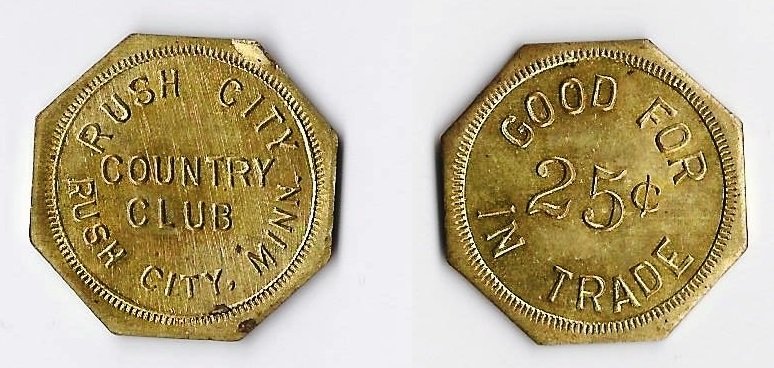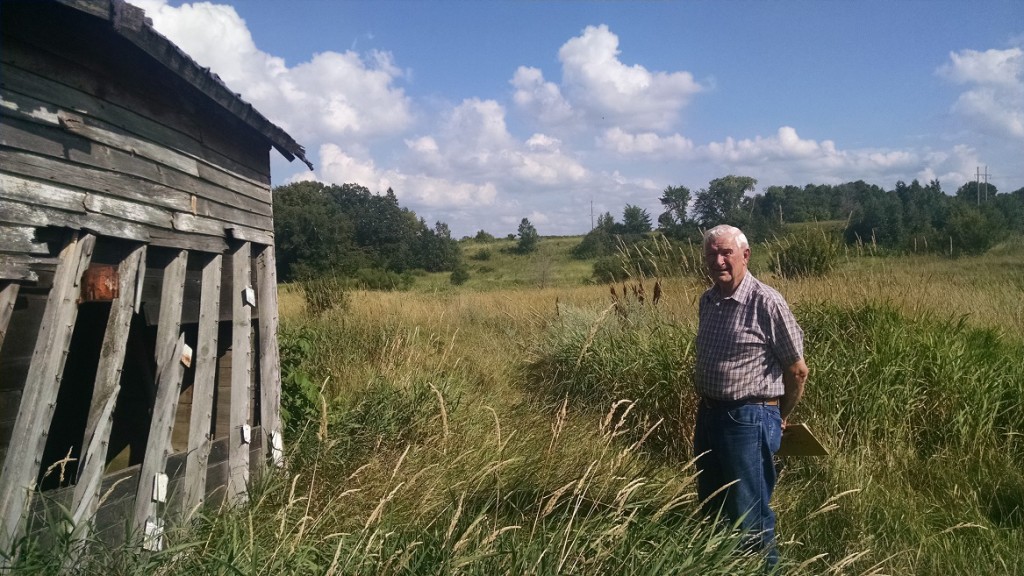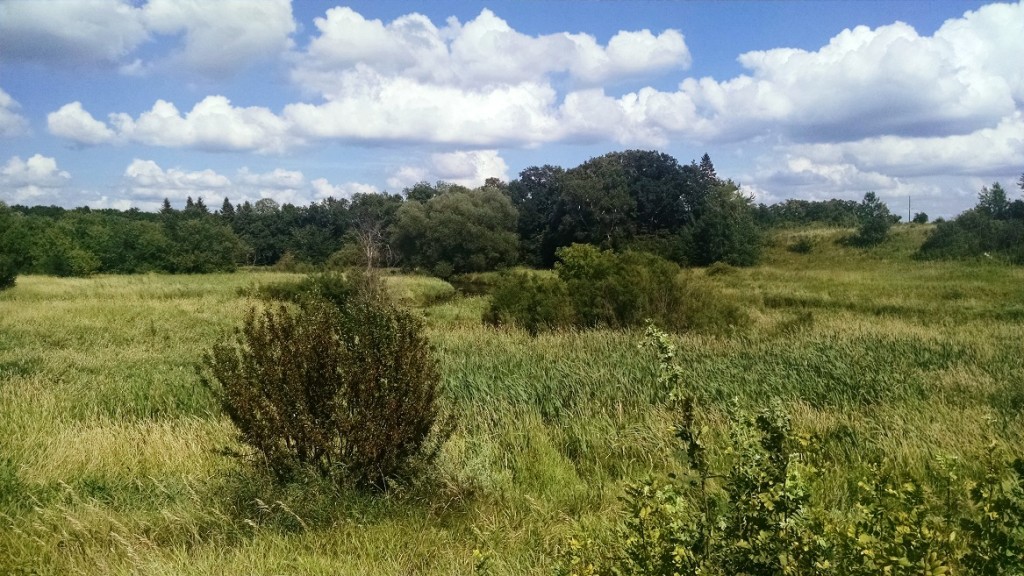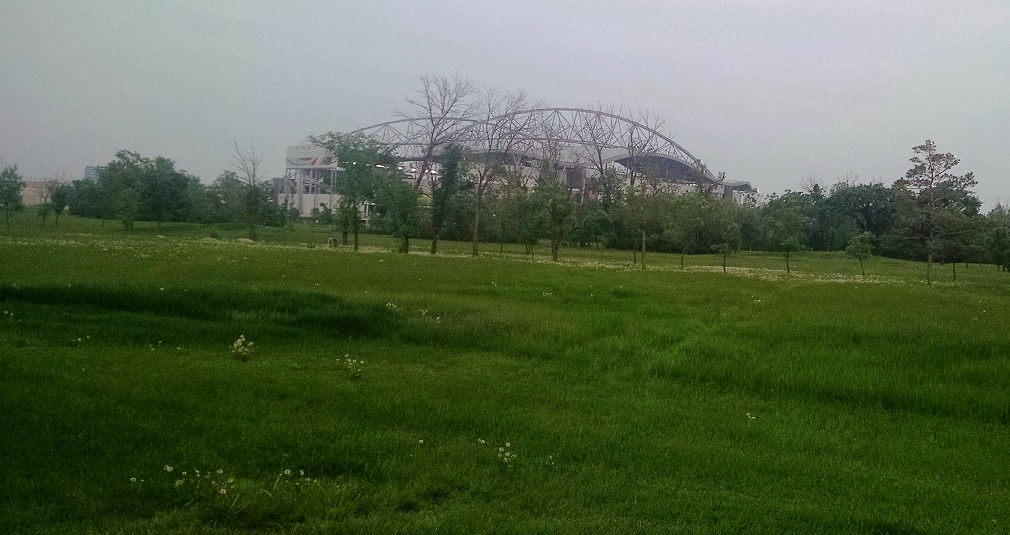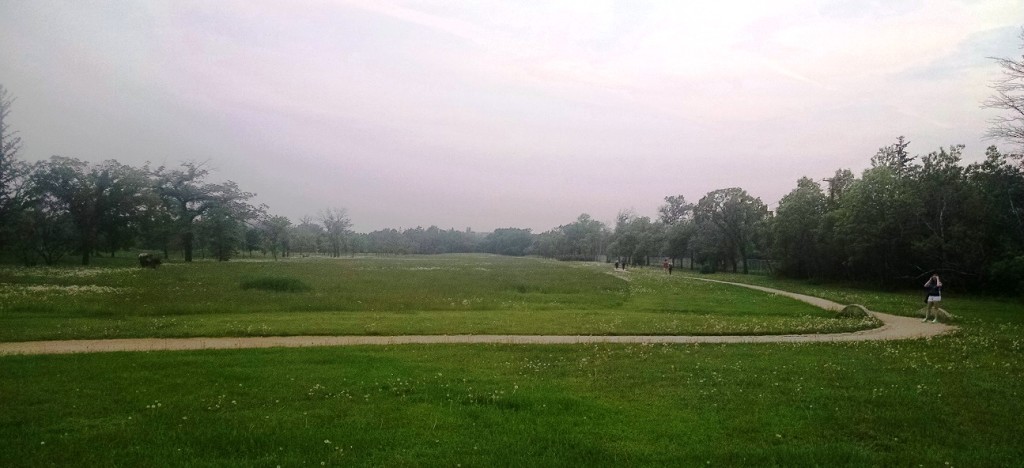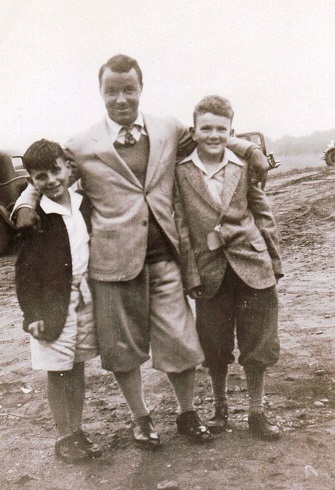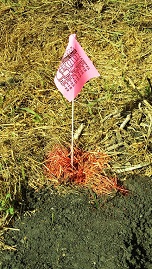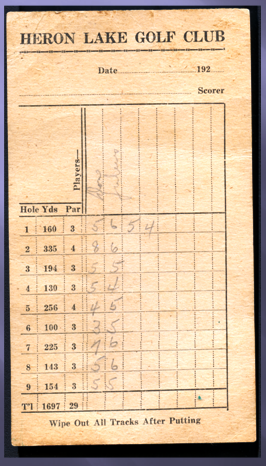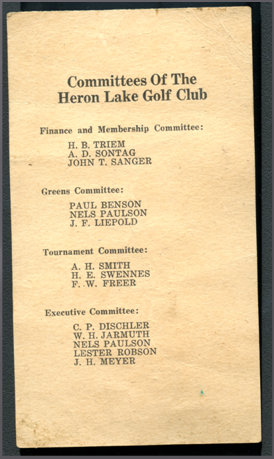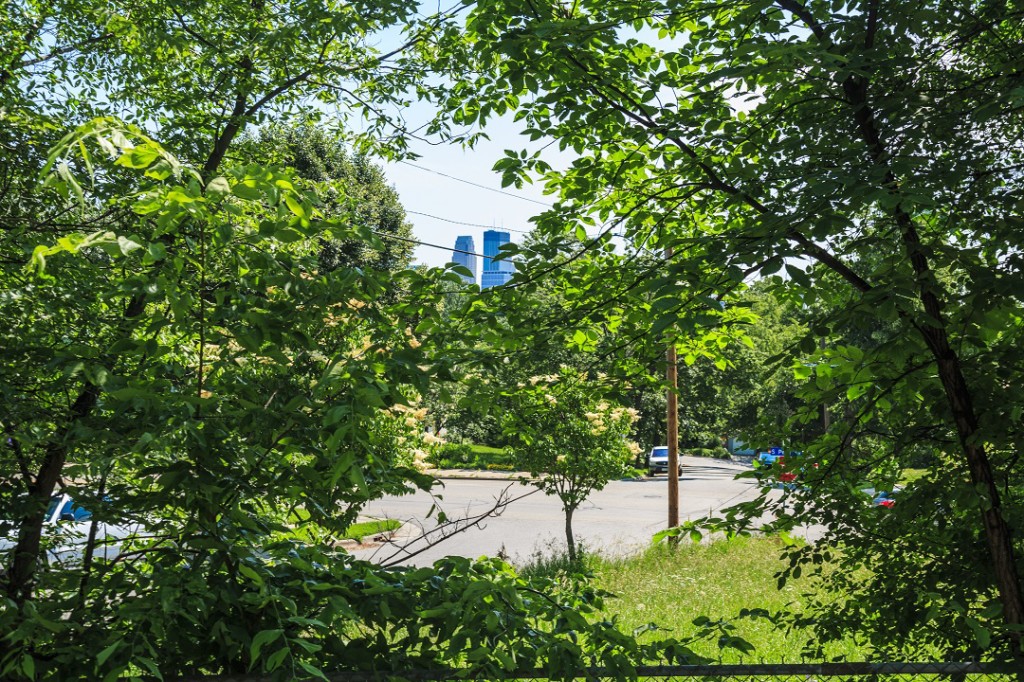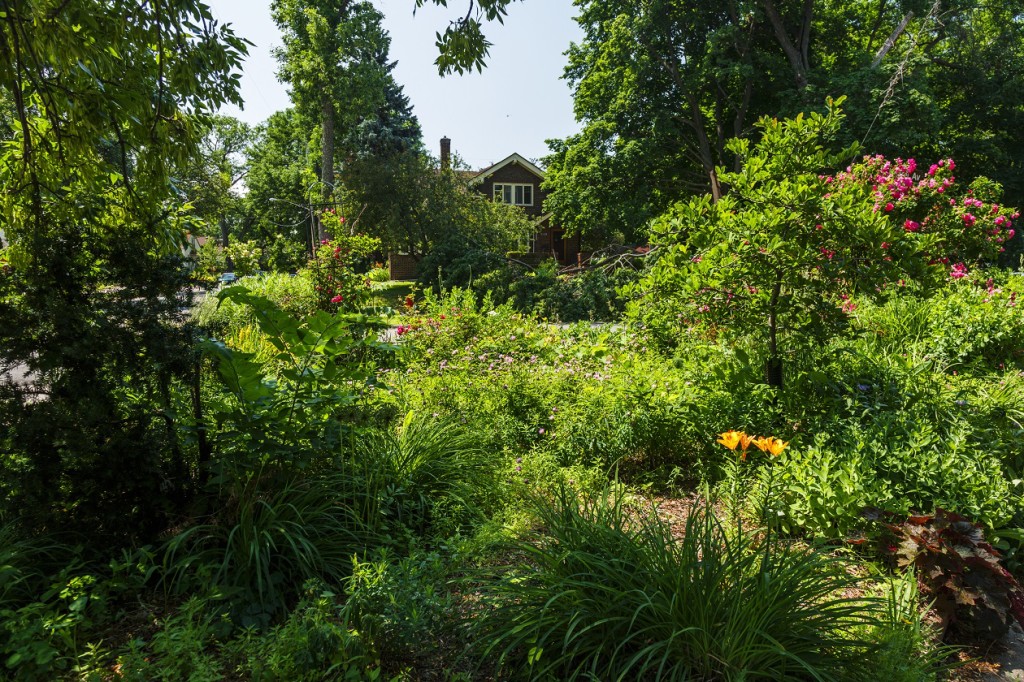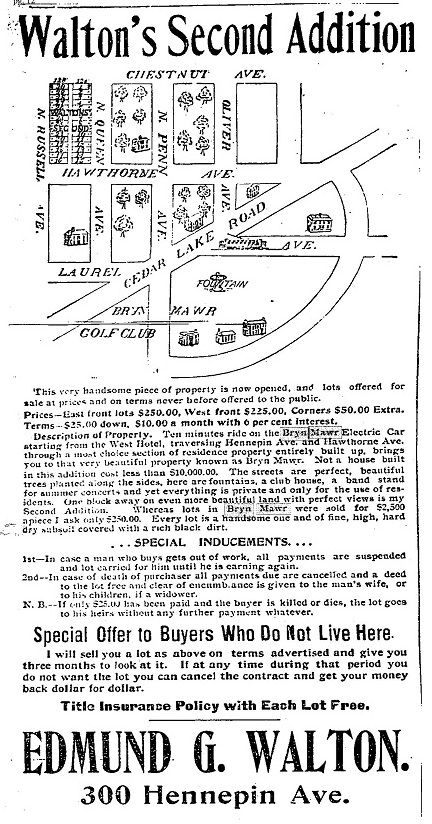July 27, 2015
“Well, should we take a look?”
Don Johnson had popped the question.
Johnson and I were spending a late afternoon exploring. We had driven into northern Chisago County and pulled off the road. We were starting at an open field when he up and said the six magic words:
“Well, should we take a look?”
Um, yeah, Don. We should take a look. I mean, after all, it’s a lost golf course. Why
wouldn’t we take a look? Why wouldn’t anyone?
Fine, so traipsing through long-empty fields with rarely much to really see isn’t everyone’s cup o’ frappucino. Nevertheless, I had wanted to check out the place, and I had wanted Johnson to check it out with me, never mind the handful of mitigating circumstances.
Such as:
Bumps and brambles. This was rolling turf, overgrown with grass, weeds and thistles,
shin-high to knee-high. No, this wouldn’t exactly be an expedition up the sheer face of
El Capitan, but it wouldn’t be a walk in the park, either. Tumble-and-fall potential: maybe 10 percent.
Also: The temperature was 90. Humidity was up there, too.
And: Johnson was 87. As in years of age.
“Eighty-seven and a half,” he had gently corrected me a bit earlier.
Not to mention: Carl Heinrich’s advice.
OK, I just mentioned it.
A month earlier, Heinrich, who owns property just east of where Johnson and I were standing, had suggested in a phone conversation that exploring the premises, especially the wooded area surrounding nearby Rush Creek, might not be prudent. Something
concerning large mammals with sharp incisors and powerful paws.
Not that I cared. Not that decency prevailed, either, prompting me to suggest, say, this
rejoinder to Johnson:
“Sure, Don, let’s go look around, but just FYI, I’ve been told there might be bears close by, perhaps eager to consume our major organs and leave our rotting entrails over by the
second green.”
No, I shut up. I wanted to explore the 60-year-old resting place of Rush City Country Club as much as Johnson did.
We forged ahead.
——————
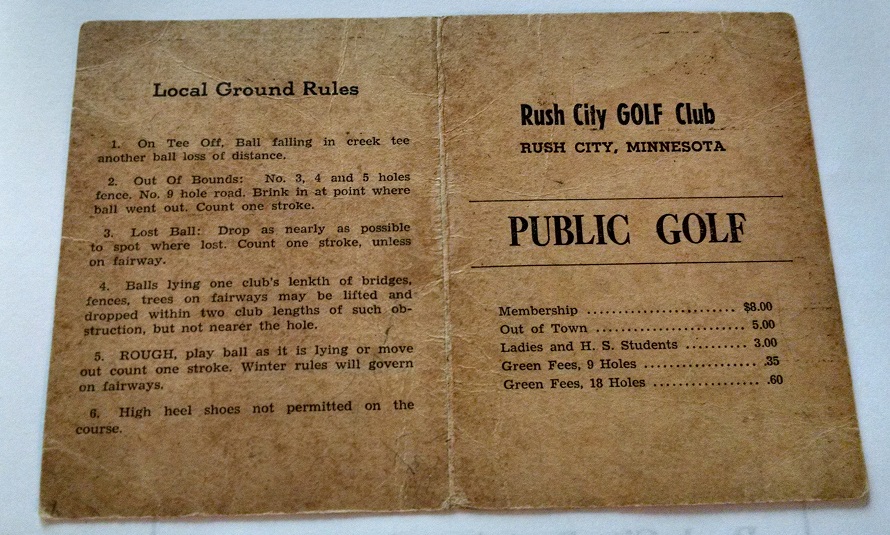
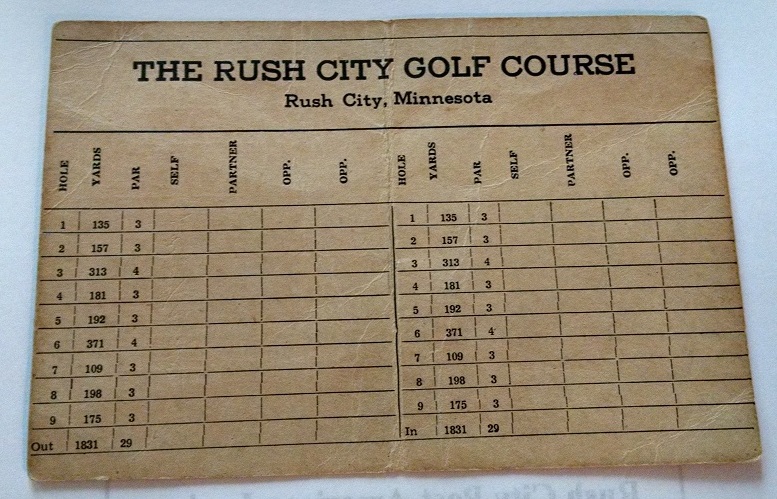 “The Rush City Golf Course was
“The Rush City Golf Course was
developed in 1932-33 by Arthur ‘Art’ and William ‘Bill’ Johnson on the J.P. Johnson farm east of Rush City,” reads the first sentence in “Rush City Golf Course,” a
detailed, illustrated booklet
written by Art Johnson’s son Don — the same Don Johnson who was exploring the abandoned course with me.
“The design and construction of the golf course,” the booklet
continues, “was assisted by Pete Carlson, who developed and
operated the golf course on Sand Lake near Moose Lake MN. The (Rush City) course was first opened for play in 1934.”
To be more specific, Rush City Country Club (or Golf Course, or Golf Club; it was referred to all three ways) was situated one mile east-northeast of
downtown Rush City, off Chisago County Highway 55. Across the road to the north in
modern times lies a soybean field and then the southern edge of the landing strip for Rush City Regional Airport. The golf course lay just south of the highway. Bisecting it during its playing days was Rush Creek, a serpentine stream that flows out of Rush Lake, west of Rush City and Interstate 35, and ultimately empties into the St. Croix River.
If anyone knows the lay of the land, Johnson does. He grew up on the property, slept and ate and studied in the abode that also served as the golf clubhouse. He played Rush City CC as a youth and helped the family manage the farm and golf course before graduating from Rush City High as the class salutatorian in 1945. He attended the University of
Minnesota and went on to work in the Twin Cities as a mechanical engineer for Honeywell.
Johnson, who is retired and now lives in Lindstrom, later developed an interest in his Chisago County and western Wisconsin roots, became a genealogy expert and history buff, and wrote the Rush City Golf Course booklet a decade ago. It is the definitive history of the lost course.
A few more passages:
“The golf course was first developed by tiling and draining land along Rush Creek, which was already beginning to dry up in the early 1930s. The course of Rush Creek was altered to fill and straighten one of the horseshoe bends. Three holes followed the course of the creek. As originally designed and built, the golf course was a par 36. The greens were oiled sand, as were most of the country courses at that time.
“Frequent stories in the Rush City Post tell of various golf tournaments being held, pitting the locals against teams from Braham, Cambridge and North Branch starting in 1934.”
(A round of 40, recorded by Huck Merriott in 1934, is the lowest score mentioned in the
handful of newspaper clippings and ads offered by Johnson.)
“… As the ground along Rush Creek became wetter near the end of the 1930s, the golf course had to be altered and shortened two different times until it became only a par 29. Thereafter, only two holes, #1 and #7, crossed the creek, and none played along Rush Creek.” (A scorecard from the redesigned and shorter version of the course lists only two holes longer than 300 yards.)
This image, scanned from Don Johnson’s “Rush City Golf Course” booklet, shows the first hole at Rush City Country Club, circa 1940. The hole was a 135-yard par 3, crossing Rush Creek. The sand green is visible to the left of two smaller trees toward the top-left of the photo. Johnson took the photo after climbing the windmill on the family farm.
” … During the winter of 1934-35 the clubhouse was remodeled and in the spring of 1935 was opened for dances several nights a week in addition to golf. … From 1935 until about 1943 Saturday night dances were held at the club house with beer, set-ups and
hamburgers being sold. A 5¢ slot machine was also operated in the club house but was
always moved out of sight into the ladies rest room when notification was received that the sheriff was coming for a visit.
” … The golf course continued to operate until about 1954, although never regaining the popularity and tournaments of the 1930s and early 1940s after the end of WWII.”
Johnson’s newspaper clippings featured ads: “Herman Sandquist and his orchestra will play at the club” … “Hamm’s and Glueck’s Beer on draught” … “Shot-gun Turkey Shoot … Use your own gun and ammunition.”
————
Johnson and I tromped into the field. We approached the only standing building in sight — although “standing” hardly seems the operative word. An old granary, tilted so badly you’d swear you could knock it over with a properly placed whisper, leaned out toward the golf grounds, standing sentry, as it did 75 years earlier, near the corner of what was a dogleg on the first hole of the course’s original design.
That opening hole would be replaced in Rush City CC’s later, wetter years by a par 3 of 135 yards that crossed Rush Creek. The hole today would be considered the antithesis of a proper golf hole — instead of a grass green with a sand bunker beyond, it had a sand green with a grass bunker beyond. (In the photo above, the former green site is visible at the clearing near the horizon.)
Old No. 1 was memorable for Johnson. “There was a kid, I was in first grade and he was in second grade,” Johnson told me a couple of weeks earlier in a phone conversation. “We played the first hole, and he beat me. He got the first hole in 12 shots, and I did it in 13.
“The thing is, we went on and went to school together and played sports together, and I never could beat him at anything.”
You could blame the equipment, Don, and no one would think the worse of you.
“I learned to play golf using the backside of my dad’s left-handed putter,” Johnson said.
Moving on, we came upon old concrete blocks 60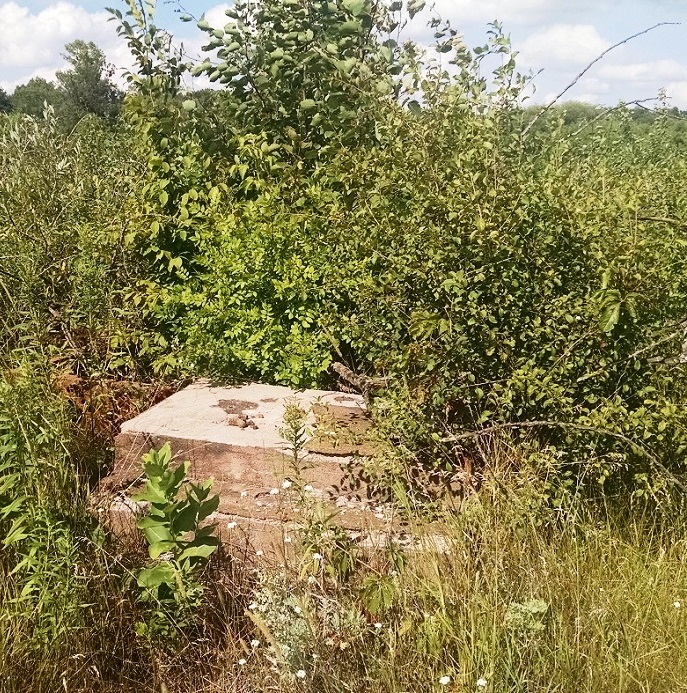 yards south of the granary. They were part of the foundation of Johnson’s childhood home — in other words, the old Rush City CC
yards south of the granary. They were part of the foundation of Johnson’s childhood home — in other words, the old Rush City CC
clubhouse. Nothing remains of the building except the
foundation and part of an exit on the building’s west side. A patch of day lilies planted by two of Johnson’s aunts in the mid-1930s still blooms alongside the foundation. The two-story house was burned down in about 1990, Johnson said, in
order to ensure a clear path for craft flying in and out of the
nearby airport.
Johnson explained that the bulk of the golf course once lay mostly to the east and south of this spot, part of it on low ground near the creek and more of it on higher ground across the creek.
Though Johnson is the pre-eminent authority on Rush City Country Club, then and now, Heinrich offered a couple of recollections as well.
“When I bought that land,” Heinrich said, “I found so many golf balls. I gave a 10-pound sack of them to some kid as payment for working for me.”
Also, he recalled, “I had this hired hand; he’d see golfers go out and chop at the grass. If we had boiled eggs for breakfast, he’d put them out there, and the golfers, they’d go out swinging away and looking for the balls — and they’d be eggshells.”
From a slight rise near the former first tee of Rush City CC, Rush Creek is visible below,
winding eastward. (No bears in sight.)
Author’s note: What was I thinking? Finding every one of Minnesota’s lost golf courses has proved to be as implausible as winning the Grand Slam. I knew that would be the case when I started researching and writing about them in earnest three years ago, but still …
This is the first in a series of posts that catch up with lost golf courses I missed in “Fore! Gone.” Next up: Clearwater Country Club, Annandale.
Thanks for reading.
jb
Author’s note II: The old Rush City Country Club token pictured at the top of this post was generously given to me by Don Johnson. Much appreciated, sir.
